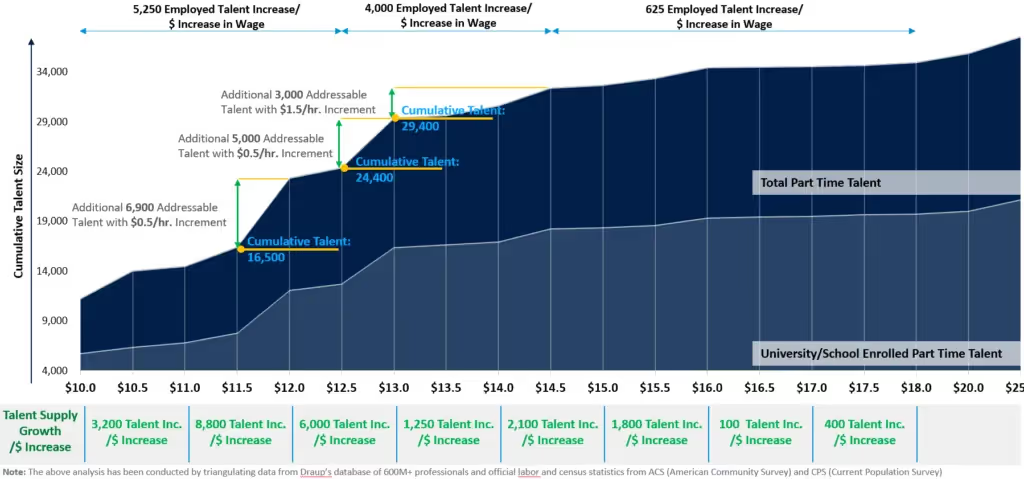Human Resources in a Post-Covid World
This week we centered around the challenges and the opportunities facing Human Resources post-Covid. The inspiration for this email comes from the following quote of Ramon Laguarta in one of his book forwards. Successfully Navigating complex changes requires the ability to lead people through uncertainty. Continually scanning the external environment, envisioning future scenarios, and building capabilities to thrive under any circumstance is a top priority
There cannot be a better summary of how to approach the post-Covid world. In many ways, the objective of these weekly emails is to enable you to think through these across all these layers (scan external environment, envision future scenarios, and building capabilities). Here are some challenges (opportunities) facing the HR
A remarkable signal from UBS: (HR should understand Backsourcing and Citizens Developers)
Outsourcing giant Cognizant was forced to dismiss dozens of Swiss staff. UBS continued its policy of bringing the entire IT department back in-house under CEO Ralph Hamers.
Mike Dargan, who became UBS’s chief information officer in 2016, reversed the bank’s outsourcing strategy. The massive acceleration in innovation and digitalization in the financial sector forced Dargan to conclude that in-house departments should deal with IT development and services to keep up. This phenomenon called Backsourcing or Insourcing may mean that the demand to hire more technical staff may continue to increase. Within this context, a concept called Citizens Developers is also relevant. Citizens Developers are users who create business applications/solutions for others in the company. They may not be coding professionals by background but use the array of complex technologies that have made development more straightforward. This movement is called the Low Code/No-Code movement, wherein you use pre-packaged solutions to write visualizations, and other small applications are made more accessible. While TA function needs to focus on accelerated hiring!, L&D will have to focus on this concept and have the foundation in place
Talent Availability in a location is less critical now than Talent Accessibility
Historically, location studies have centered around talent availability in a given location as a critical metric. But it is undeniable that we have to shift gears and understand what talent we can access
- Depending upon the type of company, you may be able to access the talent working in high tech companies (limiting factor to evaluate)
- Depending upon your Purchasing power, your accessibility may change. The sensitivity analysis below shows a 3 dollar change in front-line worker wage almost doubles the talent pool that can be tapped into. (many examples like this for all the jobs exist)
- Restrictive policies around work from home may also limit the accessibility

Recruiter Job duties are rapidly changing post the pandemic
Modern-day recruiters’ roles have changed. (almost similar to the changes post the invention of the Steam Engine in the 1700s!). A successful Recruiter today has the following attributes:
- A digital community builder
- Understands digital transformation trends within the industry
- Provides exceptional service to both selected and rejected candidates
- Ability to identify and neutralize system, process, and other bias
- Involves business leaders and promotes conversations between candidates and internal leaders
- Knows the top professionals in the company and taps into them for any clarifications about the jobs
While the tactical aspects are automated, the human elements have grown significantly. As a result, staffing correctly in the Recruitment function is essential
Readiness to work in spread out Geographies
Around 2009, I undertook a journey to visit many industrial towns (these are towns where a single company dominated the employment of the entire town). The trip involved visiting several towns in Wisconsin, Illinois, and many industrial towns in the US. One specific visit took me to Pella, Iowa, where Vermeer is located. The company had such a keen sense of community and was blown away by the commitment they have to build the company. Vermeer has gone through several formidable challenges. But they are doing very well now. They are even hiring outside of Pella- Iowa now.
Geography is a powerful thing. Proximity and loyalty that can be commanded in one geography – there is no match to that. But HR will now have to examine how to replicate this across multiple geographies as Enterprises expand locations. The key is to bring a sense of belonging in corporate headquarters across all locations (hubs, satellites, and outposts). Only a solid Human Resources team will be able to accomplish this. Employee Sentiment Analysis and Candidate Sentiment Analysis are potent tools in the modern age to enable this.
Location Intelligence
Companies should understand the following geographies in detail with respect to Talent Availability (or should I say accessibility). This is important even if you do not have a center (consistent with Pepsico CEO’s message on scanning the market). We believe that many companies are not focusing on these locations
- Eastern Europe: Eastern European countries are, Belarus, Bulgaria, the Czech Republic, Hungary, Moldova, Poland, Romania, Russia, Slovakia, and Ukraine
- Northern Europe: The UN in 2017 has changed the status of Estonia, Latvia, and Lithuania from Eastern European countries to the states of Northern Europe,
- Every changing dynamics of talent in Mexico, Brazil, and Argentina
- Nigeria, Ghana, and Rwanda
Just last week, Global professional services company Accenture has announced plans to establish a new ICT service center (Advanced Technology Center) in Lithuania’s capital, Vilnius. The center will open later in 2021 with the recruitment of a few dozen employees. Steep growth is envisioned, with Accenture’s staff in Vilnius expected to grow to a couple of hundred over the next few years.










.svg)




















.svg)





.svg)
